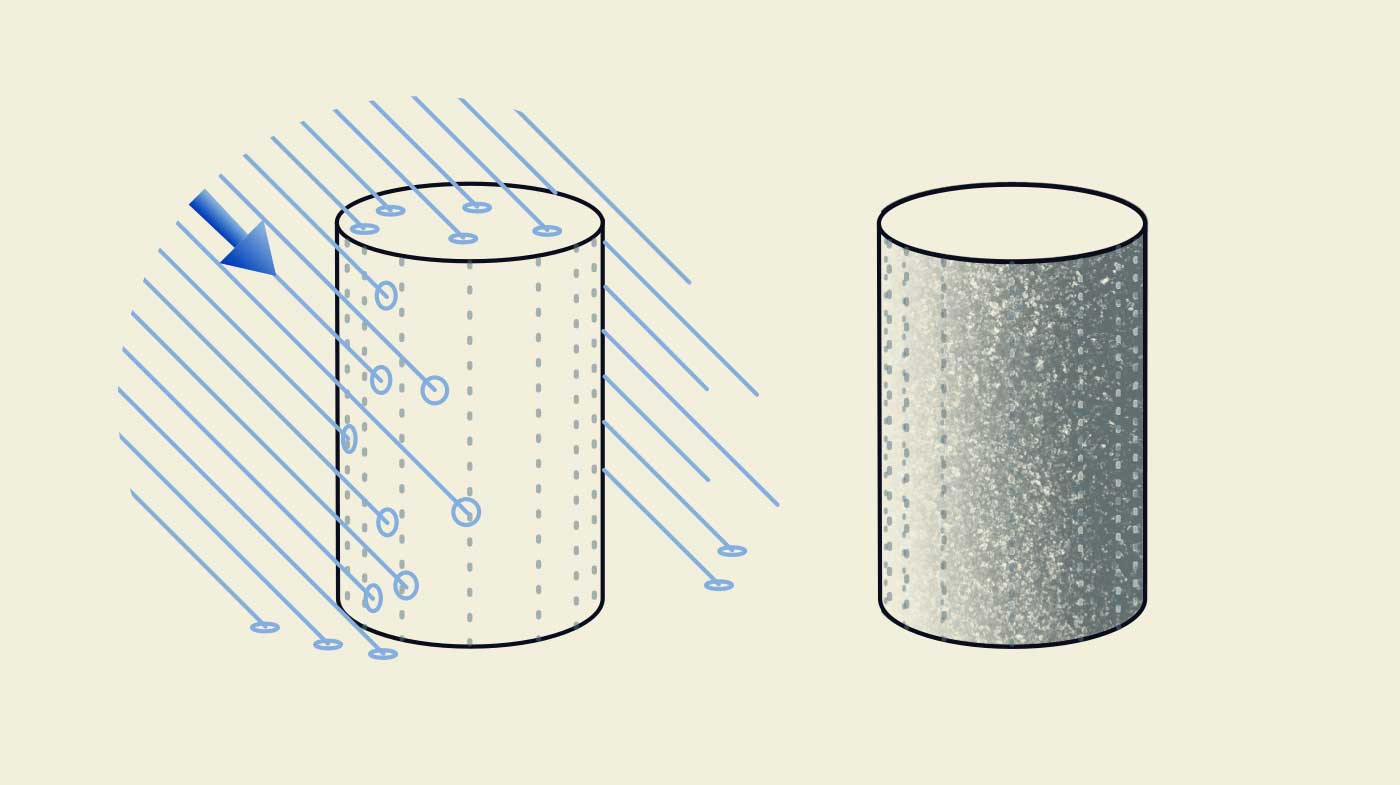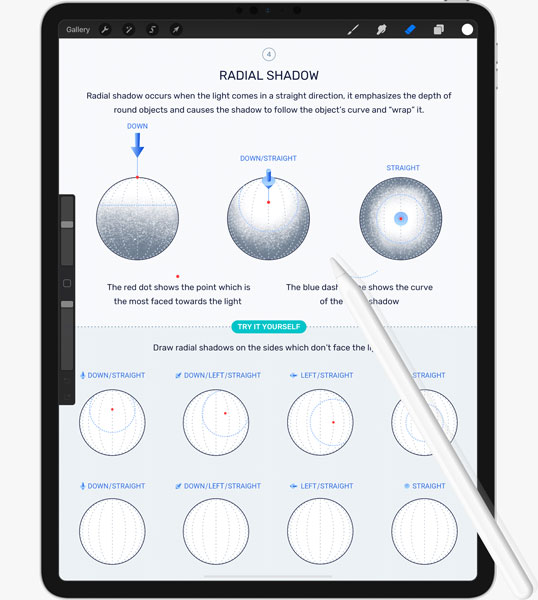
In this tip I’ll share the basic things you need to know if you want to start practice and get better in shading. By understand the simple principles below, you'll feel more comfortable when attempting to add shadows in your next artwork.
To understand shadow, you need to understand light. Shadow is nothing more than the absence of light. In other words, if the light is blocked by an object, the surface on the other side of the object will receive less or no light and thus create a shadow.
So when you want to add a shadow to any object, you have to first decide from what angle the light is coming from as this dictates which side of the object will receive light and which side will not and therefore be shaded. It’s important to keep the same direction across all the different objects in your drawing.
Shadow defines the material. There’s a very prominent connection between the type of material and the look of its shade. A shadow on a green apple would look completely different than a shadow on a piece of cloth. That’s why artists use different textures and colors when applying shadows to objects.
If you want to achieve authenticity and a realistic feel in your art, you should try applying your shadows with a texture brush. My own texture brushes are crafted from photos of real-life textures that I captured and they’re perfect for adding shadows and highlights.

Shadows are wrapping the object. Now that you know from where the light is hitting the object, simply draw the shade by following the shape of the objects in your drawing. Round surfaces should get a radial shadow, and straight surfaces should get a linear shadow.

As we said above, a shadow is nothing but the absence of light, so the curves of the object which is blocking the light will always dictate the shape of the shadow. By following the curve you emphasize the depth of the object and give it a three dimensional feel. Good shadows will help you define your shapes better.
If you want to practice your shading skills, I’d recommend you to use my Shading Worksheets. It includes 7 worksheets with explanations, examples, instructions, and many blank objects for practice.

These are my tips for understanding basic shading principles. Hope they'll help you in your next artwork!